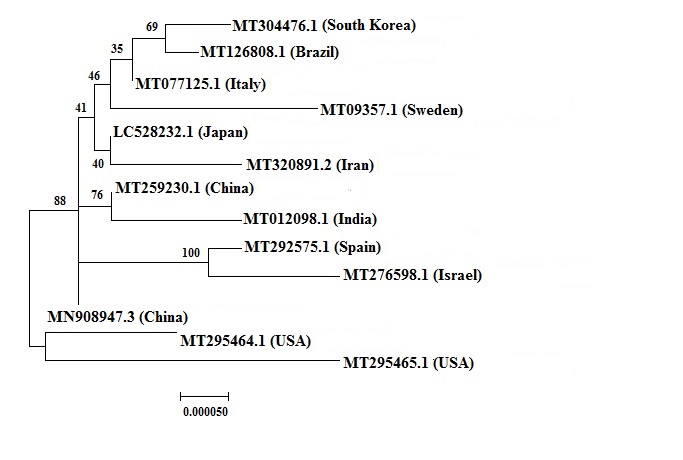In the wake of the current SARS-CoV-2 pandemic devastating the world, it is imperative to elucidate the comparative genomics of geographically-diverse strains of this novel coronavirus to gain insights into its microevolution, pathogenesis and control. Here we explore the molecular nature, genome-wide frequency, and gene-wise distribution of mutations in three distinct datasets encompassing 68 SARS-CoV-2 RNA-genomes altogether. While phylogenomic analysis revealed parallelism between the evolutionary paths charted by distinct quasispecies clusters of the virus, occurrence of mutations across genomes was found to be non-random. Whereas deletion mutations are extremely scarce and insertions totally absent, of all the instances of single nucleotide substitution detected, the overwhelming majority were transition mutations with cytidine to uridine being the most prevalent type. Propensity of this transition could be attributed to hydrolytic deamination mediated by ultra-violet irradiation or bisulfite reagent, both of which find wide usage as sterilizer/disinfectant. Transversions, albeit few and predominated by the guanosine to uridine form, were found concentrated in loci encoding the structural proteins of the virus, so might confer versatile tissue-colonization potentials. Mutation frequency of the three distinct genome-sets ranged narrowly between 0.07-1.08 × 10-4 nucleotides positions mutated per nucleotide aligned. Gene-wise mapping of the global mutations illuminated the highly conserved nature of the genes encoding the non-structural proteins Nsp7, Nsp8 (two essential cofactors of the viral RNA-dependent RNA-polymerase) and Nsp9 (Nsp8-interacting single-strand RNA-binding protein), plus the envelope protein E (involved in SARS-CoV-2 assembly, budding and pathogenesis). These mutation-free genomic loci and/or their protein products could be potent targets for future drug designing/targeting.

